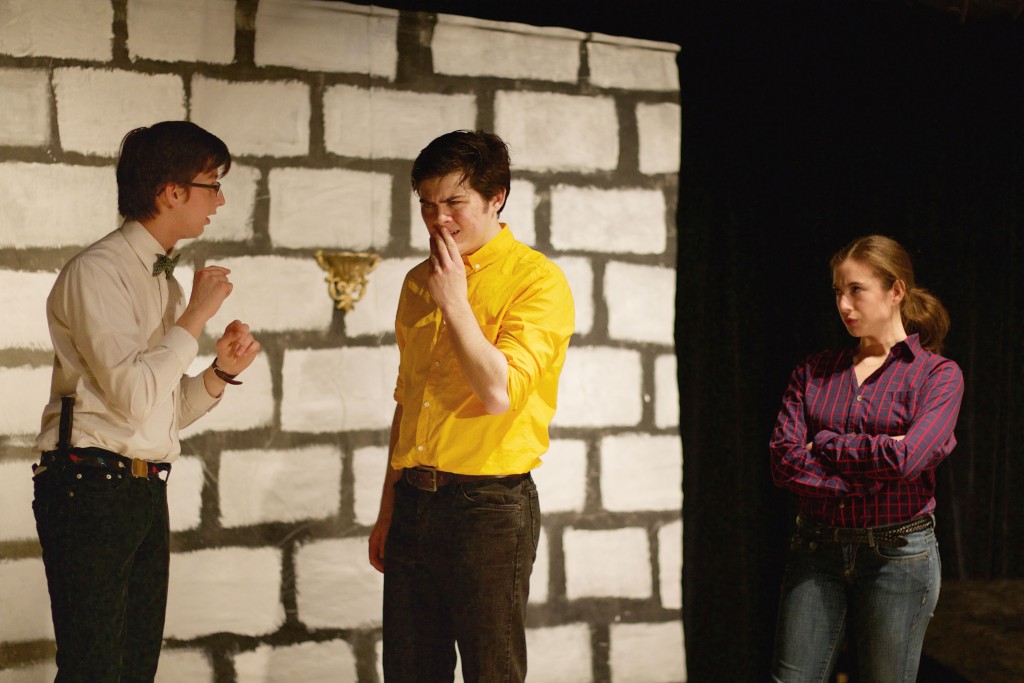
This semester, the Hinman Production Company (HPC) brought a full-length existential crisis to their stage with Thomas Stoppard’s “Rosencrantz and Guildenstern Are Dead.”
The play is an absurdist, existentialist adaptation of Shakespeare’s most beloved tragedy, “Hamlet,” but focuses solely on minor characters Rosencrantz and Guildenstern, who spend their time waiting backstage in Shakespeare’s play. Within the show, characters from the original text drift through the stage to make cameos, and there are clear allusions to the fact that a production of “Hamlet” is occurring simultaneously. The play has often been compared to Samuel Beckett’s classic existential work, “Waiting for Godot,” as both plays consist of two characters who spend their time pondering the meaning of life and the two leading roles appear to be more of one character rather than two.
However, what makes this production of “Rosencrantz and Guildenstern Are Dead” a stand-out adaptation is the directorial decision to cast multiple actors for each part — in each act, Rosencrantz and Guildenstern are played by a different pair of actors.
“The script deals a lot with identity and sense of self, so I decided to make Rosencrantz and Guildenstern three different pairs of people,” said Tom Planamento, a co-director of the play and a senior majoring in history.
This decision brilliantly affects the self-conflict of the play: in each of the three acts, Rosencrantz and Guildenstern philosophize, only to doubt and rescind their prior statements. Nowhere in the play is this more obvious than in their discussion of death: in one act, they fear and recoil at the thought of it, but in the next, they embrace it.
In many ways, staging this play breaks a lot of boundaries for HPC. The show has a particularly large cast for a drama and for the first time, HPC brought on both a fight choreographer and a costume designer to the creative team. This production also includes a musical element, a new addition to Stoppard’s play.
“It was my idea to put live music into the show,” said Natalie Lista, a co-director of the show and a sophomore majoring in integrative neuroscience. “That wasn’t in the original script, and I feel that it adds an extra layer [of its questioning of reality] to an already difficult play.”
Meanwhile, the actors tackled the difficulties of the show’s language, which includes both modern vernacular and Shakespeare’s own Elizabethan excerpts.
“I’ve never really done anything with Shakespearean language before,” said Taylor Amato, Act II’s Guildenstern and a junior majoring in psychology. “Likewise, it was very rewarding to go into script analysis and understand the text as it was written and the layers of meaning that were piled on it.”
Though the language, lenses and theories of the play may be difficult, the universal appeal of the show is that it deals with the very existence of being. It asks questions about life, death and reality that every member of the audience has asked themselves without offering any clear-cut answers. It’s a play that breaks the fourth wall, has absurd dialogues that loop in circles, openly condemns yet celebrates suicide and death and has play-within-a-play scenes; it’s a play that literally argues with itself. For anyone with a vague interest in Shakespearean theater, existentialist philosophy and absurdist comedy, this play is a must-see.
“Rosencrantz and Guildenstern Are Dead” opened at Hinman Commons on March 16 at 8 p.m., and will continue its run at 8 p.m. until March 19, which will also have a 2 p.m. showing. Admission is $3.


